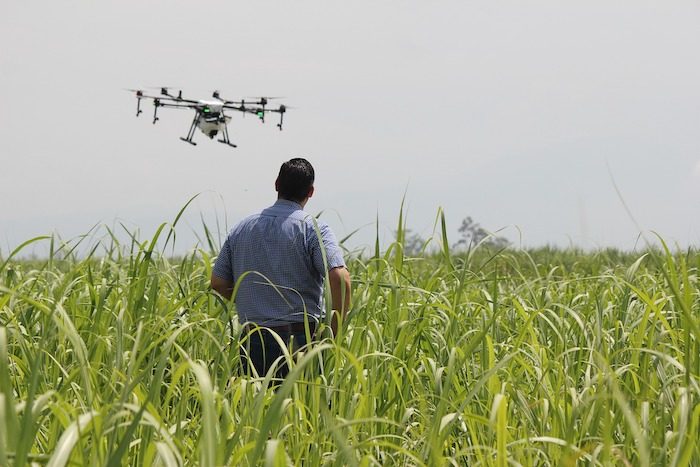In Lowry, Minn., Zach Johnson, age 36, and his father, Nate, are in the early stages of their farm continuity plan.
The goal is that in 10 years, Zach will own most of the machinery used to farm their corn-and-soybean operation, which is currently on 2,600 acres.
But Zach — who is known for his YouTube channel “The Millennial Farmer” and is also a cohost of the “Field Works” podcast on Minnesota Public Radio — admits that it’s a moving target. Many factors could impact that timeline and the future of their farm, particularly equipment investments, the ROI of technology, and new farming practices, and how they all, ultimately, affect cash flow.
Right Equipment Will Drive Efficiency
Since machinery ownership is a primary factor in the Johnsons’ transition process, it plays a role in how they evaluate equipment investments now, with potential repairs driving the conversation.
In spring of 2020, they had a significant repair bill on their 8-year-old tractor, which has 2,300 hours on it. Because of that, they’re trying to determine how old or new they should buy equipment.
“We might be better off just spending that money and have a 2- or 3-year-old tractor that’s covered under some sort of warranty, where those repair bills aren’t going to hit us,” Zach says. “Or we drop back to a 15-year-old tractor, where maybe the repair bills aren’t so high, and maybe it’s a little easier to fix it ourselves.”
Dealerships play an essential role, as parts availability and reliable service have always been the deciding factor with these investments, Zach says.
“All brands, in my eyes, build a good machine,” he adds. “You can’t say that one of them builds an absolutely perfect machine, and you can’t say that any of them are junk or they wouldn’t be in business anymore. The deciding factor for me really is the parts and service, and the resale in whatever area you’re in.”
The Johnsons aren’t interested in the newest, most decked-out machinery.
“I don’t need a refrigerator in my tractor,” Zach says. “And I don’t need to pay the money for it, because it’s going to break anyway, eventually.”
He adds he wouldn’t be surprised if equipment becomes simpler in the future, especially if the depreciation on some of the over-equipped machinery becomes more than what most farmers are willing to pay.
That’s not to say the Johnsons don’t see value in modern equipment. Zach believes new machinery will be vital to improving efficiency.
“There’s so much high-speed machinery coming out now, whether that’s in tillage or harvesting or planting,” he says. “I think that’s going to be huge because now we’ve got 60-, 70-, 80-foot tillage machinery, and instead of pulling them at 5½ mph, we’re figuring out how to pull them at 8, 9, 10 mph. I think that’s going to drive a lot of efficiencies, where the same size machinery and the same guy running it can now cover three times the acres because we can drive so much faster.”
Evaluating the Value of Technology
What does frustrate Zach about new equipment are the software and technical glitches that pop up. So when he’s evaluating new machinery, he asks whether the technology will pay for itself. “I don’t want to pay for technology that’s just going to be a hassle more than anything,” he says.
In addition to operational problems, Zach wants to see better data on whether certain technologies provide an ROI and whether farmers are the ones benefitting from it. Variable-rate application is one technology he questions.
“I can tell you situations where variable-rate does work for us on our farm, and I can tell you situations where I feel we were taken advantage of and there wasn’t a return there,” Zach says.
One instance of this was when they had their prescription maps written by a third party that didn’t have experience with their fields. Their system didn’t recognize the differences between a high, sandy area and a low, wet area, because it only looked at current yield history.
“Since their system didn’t layer any data, we ended up with areas of the field where I felt the prescription was backwards,” Zach says. “When we took control of our own variable-rate recommendations, that’s when I started to understand how to use that properly to get an ROI.”
He adds that’s when he also realized that some acres don’t need to be variably rated. “Understanding that difference has paid off for us.”
That experience proved to him the importance of understanding what technology provides a positive ROI on his operation, which he will continue evaluating in the future.
The same applies to the data collected from precision ag technologies. Zach sees the ag industry weeding through which ag data is useful, and what is just fun to look at.
“We’ve got to find that happy medium on what provides the ROI and what is trying to micromanage too much and ultimately just wasting our time,” he says. “I think a lot of people realize that can get really messy, so we need to make sure we know what we’re looking at.”
Consumers Will Drive Demand, Create New Opportunities
But it’s not just farmers that want more information. As consumer interest in the production of food and other products continues to grow, Zach believes they will play a significant role in the future of farming.
He predicts demand for smaller niche crops, which may not require thousands of acres to produce, but will require specialty machinery.
He also sees a growing adoption of sustainable farming practices, especially for those doing high-acre corn and soybeans production.
“Regenerative practices right now are a big buzzword, and it can be a little debated at times exactly what that means, but I think there’s going to be a transition towards some changes in practices,” Zach says. “Not just because the consumer is asking for that, but also because farmers are seeing the advantages of them, through healthier water and soil and doing the right thing.”
That transition will also drive a change in farm equipment demands. The Johnsons just bought a strip-till machine as a step toward seeing whether they can get closer to a no-till system.
“If you’re changing the biology of your soil, you have to manage the farm a little bit differently, and you might need different equipment,” Zach says. “Some of these no-till guys can get rid of their higher horsepower equipment because they don’t need to pull large tillage machines anymore.”
Zach hasn’t seen much success with sustainable ag practices like cover cropping in his area, but he also admits he hasn’t seen many farmers try it.
As the Johnsons evaluate strip-till, Zach says it has to provide at least one of two outcomes for success: either a financial ROI or an environmental benefit.
“If I can switch over to running less tillage and hopefully have healthier soils and cleaner waters and keep the soil in the field,” he says. “If I can have all of those things and even maintain the same cash flow, maintain the same yields, that’s a success because I’m doing an environmental benefit without giving up cash flow. Now, of course, the ultimate success would be to have the environmental benefits with additional cash flow.”
Cash Flow is King in Decision Making
Cash flow is one of the biggest drivers of the Johnsons’ decision-making, and with that comes one of their major pain points: taxes.
They take a long-view approach to managing taxes, which includes anticipating changes in tax rates.
“It’s never fun to pay taxes, but the tax rates right now are probably as good as they’ve been in several years,” Zach says. “So we are looking at trying to pay a lot of [deferred tax liabilities] right now in preparation that in the next five years, those tax rates might be higher.”
But Zach notes that it’s a balancing act, as they don’t want to kill their cash flow to eliminate a tax burden. “If you operate on a strictly ‘let’s get rid of taxes’ type of system, a lot of times you end up depleting your cash,” he says. “Then you’ve still got these payments to make and you run into times where you don’t have any reserve there.”
Managing that cash flow is also key to how the Johnsons plan to stay profitable over the next decade. A vital component of that is proactive marketing.
The Johnsons have already marketed some of 2021’s crop, which protects it from the “bulls and bears of the market,” Zach says, while also helping keep their cash flow consistent.
“My point of view is that we should be incrementally hedging some of that grain so we can make more consistent decisions,” he says. “Because we know what we have coming, vs. having half a million dollars’ worth of grain in the bins and having it be susceptible to the highs and lows.”
He sees proactive marketing having a significant impact on who is successful in the future, especially when the margins are thin.
“I don’t think there’s a ton of guys who are capturing and carrying in the market and hedging on the board as they could be,” he says. “Eventually, that will catch up to people.”
Bright Future in Farming
While farmers are facing plenty of challenges, and perhaps more on the horizon, Zach is optimistic about the future of agriculture.
“I think there are actually a lot of opportunities that are going to come along with farming in the next 10 years,” he says. “People need food, fiber and fuel. So agriculture is always going to be there.”
He adds that it might look a little different, with some farmers becoming more efficient and running more land. But he also thinks there will be many opportunities for farmers to run less land and serve niche markets.
“I think there’s a place for everybody out here.”




![[Technology Corner] Discussing AI’s Potential Impact on Service & Support](https://www.precisionfarmingdealer.com/ext/resources/2025/04/11/Discussing-AIs-Potential-Impact-on-Service--Support.png?height=290&t=1744385717&width=400)


